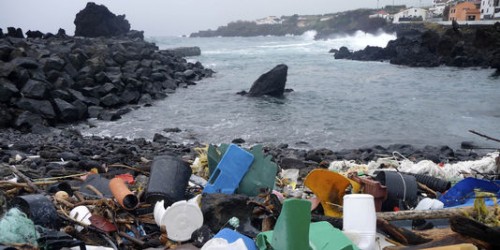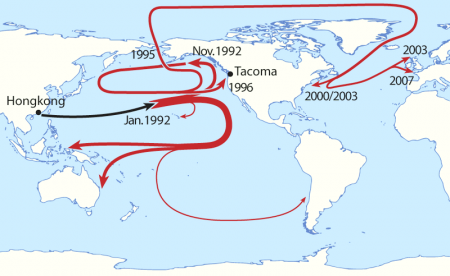The scourge of plastic pollution
ECOLOGY
The use of plastic is increasing, leading a considerable amount of materials, nearly indestructible, more or less light floating on the surface of the seas and oceans, or depositing their funds, when they do not fail on beaches everywhere around the world.
Welcome to the world of plastic pollution!
The plastic pollution
We produce more and more plastic. We made many plastic since year 2000 that throughout the last century !
The packaging for our consumer products are mostly plastic of all kinds. Our beverages are sold in plastic bottles rather than glass bottles. The problem is that these packages are generally used only once and that contrary to popular belief, only a small fraction is recycled. What’s going on? Well these plastics are buried or burned but a significant portion is found in the oceans. All waste ending in the marine environment, the volume of pollution from plastic materials is estimated at nearly 80 %. According to other estimates, almost 10% of plastic is produced annually in the world is found in the oceans , or about 10 million tons of trash.
They contain further chemical pollutants such as phthalates ( for making flexible plastic ) whose famous bisphenol A, whose toxicity depends primarily on its ability to migrate in the plastic body. It was detected with certainty that bisphenol A acts on the reproduction of animals and also in human reproduction (depends on many factors such as age , sex, pregnant women, etc…). The side effects of phthalates, in relatively high concentrations in animals in the laboratory are : declining fertility, testicular atrophy, reduced fetal weight, fetal mortality and malformations. Some phthalates also have an endocrine disruptor effect and may cause abnormal sexual development in young male rats exposed in utero. In addition, it was reported effects on the liver, kidneys and the male reproductive system … (more info: http://en.wikipedia.org/wiki/Phtalate ) .
The problem is that the plastic have a very long service life. The natural degradation time is very long . The estimated time of dilution in the nature is 100-1000 years depending on the materials . But before being completely bio-degraded as a result of sun , salt, wind, light, plastics are reduced to particles finer . The consequence is that marine wildlife accidentally ingest these particles. Millions of birds and fishes, thousands of mammals and turtles are contaminated by plastics, causing them their death at more or less long term.
Plastic islands
These plastic trashes tend to accumulate at the center of gyres, they form large tracts improperly called “islands of plastic.” In reality, it is not solid islands where anyone could walk on, but large areas invaded by small pieces of plastic that remain hidden from satellites, but perfectly visible to the naked eye from a boat. The two largest of these plastic islands, designated as the 7th and 8th continents because of their gigantic surfaces are the Garbage Patch in the North Atlantic and the Vortex Plate or waste in the North Pacific. Another plate was recently discovered in the Indian Ocean.
7th and 8th continents
The trash plate of the North Atlantic is an area of floating marine trashes in the ocean gyre of the North Atlantic, already documented in 1972. The size of the plate is estimated at several hundred kilometers , with a density of wastes more than 200,000 square kilometers. This area trash can shift its position up to 1500 km north or south, depending on the season , and drift further south at the southern oscillation phenomenon El Niño.
Great Pacific Garbage Patch is, meanwhile, described as the ” Garbage Vortex ” Pacific . Plate covers an indeterminate area (some speak of several million km ²), with estimates varying widely depending on the degree of concentration in selected plastic to define the affected area. Nevertheless, this plate is characterized by exceptionally high concentrations of pelagic plastics, chemical sludge and other waste that has been trapped by the currents of the ocean gyre of the North Pacific.
Mots clés/Tags: déchets, phtalate, plastic, plastique, pollution, vortex
A propos de cet article - About this entry
You’re currently reading “The scourge of plastic pollution,” an entry on Geodia Photoblog.
- Author :
- Francois Zylberman
- Published :
- 02.04.14 17:49
- Category :
- Geodia fundation, Ecologie - Ecology
- Articles Relatifs/Related Entries :
- Plastic pollution : Midway island example•







No comments
Jump to comment form | comments rss [?] | trackback uri [?]